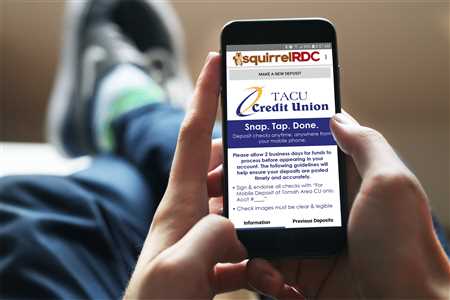

In recent years, the evolution of technology has transformed the way individuals conduct financial transactions. This innovative approach allows users to conveniently transfer funds directly through their mobile devices without the need for traditional banking methods. Embracing this trend not only streamlines the payment process but also enhances user experience, providing a seamless and efficient solution for everyday needs.
Understanding the various aspects of this method is crucial for anyone looking to navigate the modern landscape of digital commerce. The simplicity and accessibility of performing transactions from a smartphone empower consumers to manage their finances with unparalleled ease. With just a few taps, you can unlock a world of possibilities, making everyday purchases or transferring money to others a breeze.
This article will delve into the essential practices involved in utilizing your mobile device for monetary transfers. By following clear and concise instructions, anyone can master this beneficial skill, ultimately integrating it into their daily financial routines and elevating their overall money management experience.
This method of funding accounts has gained popularity due to its convenience and accessibility. Users can quickly complete transactions without the need for traditional banking methods, making it an appealing choice for many. Understanding the fundamentals of this approach can enhance your experience and streamline the process.
To effectively utilize this service, it’s useful to be aware of the following components:
By familiarizing yourself with these elements, you can navigate this method with confidence and make the most of its advantages.
This innovative payment method allows consumers to conduct transactions swiftly and conveniently using their mobile devices. It combines modern technology with user-friendly interfaces to streamline the payment process, making it accessible for individuals on the go.
Many people prefer this approach for its numerous advantages:
By leveraging mobile capabilities, users can enjoy a seamless experience when managing their finances. This option caters to a wide range of consumer needs, from online shopping to service subscriptions.
The evolution of technology has brought forth a new paradigm in transactions, allowing users to conduct financial activities from their handheld devices. This innovation has transformed traditional methods, making monetary exchanges more convenient and accessible.
Understanding the core components is essential for anyone interested in this form of transaction. Here are the fundamental aspects:
Furthermore, several key technologies underpin this system:
Familiarity with these elements lays the groundwork for engaging in this modern financial landscape, equipping individuals with the knowledge necessary to navigate their options effectively.
In today’s digital landscape, a variety of options exist for conducting financial transactions easily and efficiently. These services cater to different needs and preferences, ensuring that users can select the most suitable solution for their circumstances.
Mobile Wallets are one of the most popular alternatives, allowing users to store their payment information securely on their devices. With just a few taps, transactions can be completed swiftly, enhancing convenience.
Direct Billing offers another method, enabling charges to be added directly to a user’s account, often utilized for subscriptions or services. This makes managing recurring payments much simpler.
In-App Payments are prevalent among various applications, allowing users to complete purchases seamlessly within the app itself. This integration creates a smooth user experience and encourages more frequent transactions.
QR Code Payments have gained traction due to their ease of use. Scanning a code can initiate a transaction, making it a preferred choice for both vendors and customers in numerous settings.
Lastly, Online Banking Services allow individuals to transfer funds instantly without the need for physical cash. This method often includes additional features such as tracking expenses and managing budgets effectively.
Each of these services provides distinct advantages, promoting a more flexible and user-friendly approach to handling finances.
Utilizing modern technology for financial transactions offers numerous advantages that can simplify the consumer experience. The convenience and speed associated with mobile payment solutions make them an increasingly popular choice among users.
Convenience is perhaps the most significant benefit. Users can complete transactions anytime and anywhere, eliminating the need for physical cash or cards. This facilitates quick and easy access to funds, especially during emergencies.
Additionally, security is a major concern in today’s digital landscape. Many mobile transaction systems incorporate advanced encryption and authentication methods, which help protect sensitive financial information. This reduces the risk of fraud and unauthorized access.
Another important aspect is efficiency. Transactions via this method are often completed in real-time, allowing for prompt processing that can enhance the overall experience for consumers. This is particularly beneficial in situations where time is of the essence.
Moreover, user-friendly interfaces cater to individuals of all ages, promoting inclusivity. Many platforms are designed with simplicity in mind, making it easy for anyone to engage with the technology without prior experience.
Finally, promotions and rewards offered through various mobile platforms can provide additional incentives. These can include cashback deals or discounts, allowing users to save money while enjoying the convenience of mobile transactions.
The era of immediacy has transformed how individuals manage transactions, emphasizing the necessity for swift and seamless operations. This paradigm shift allows users to perform financial activities with remarkable efficiency, eliminating traditional delays associated with prior methods.
Utilizing modern technology, individuals can effortlessly engage in transactions at any time and from virtually any location. This flexibility offers not only ease of use but also allows for quick decision-making without the constraints that often accompany conventional banking procedures.
Moreover, the processes involved are streamlined, reducing the time required for completion significantly. As a result, users can allocate their time more effectively, enjoying the benefits of rapid access to funds and the ability to respond promptly to various financial opportunities.
In today’s digital landscape, ensuring the safety of financial transactions is paramount. Modern systems utilize a range of sophisticated safeguards to protect user information and funds from unauthorized access and fraud.
Encryption technology is a fundamental element, converting data into a secure format that can only be read or accessed by authorized parties. Additionally, multi-factor authentication adds an extra layer of protection by requiring users to verify their identity through multiple steps before completing a transaction.
Regular monitoring for unusual activities also plays a crucial role in identifying potential threats. Users are often notified of any suspicious behavior, allowing for prompt action to mitigate risks. Furthermore, compliance with industry standards and regulations ensures that service providers adhere to best practices in safeguarding sensitive information.
By understanding and utilizing these robust security measures, individuals can engage in transactions with confidence, knowing their personal and financial data is being protected effectively.
Engaging in mobile transactions can come with various hurdles that users may encounter along the way. Understanding these potential issues is crucial for ensuring a smooth experience when opting for this convenient method. By identifying common obstacles and offering practical solutions, individuals can navigate the process more efficiently and with greater confidence.
One frequent problem is inadequate connectivity, which can disrupt the transaction flow. Users should ensure they have a stable internet or cellular connection before initiating any transfers. In cases of connectivity issues, switching to a more reliable network or waiting for a better signal can help mitigate this challenge.
Another common concern revolves around security. Users often worry about the safety of their financial information. To address this, it is essential to utilize reputable applications that feature robust encryption and security measures. Regularly updating the application and the device’s operating system can also enhance protection against potential threats.
Additionally, misunderstandings regarding fees can lead to frustration. It’s advisable to thoroughly review the terms and conditions associated with the service to avoid unexpected charges. If questions arise, contacting customer support for clarification can provide valuable insights and peace of mind.
Finally, users may face delays in transaction processing. Should this occur, it is beneficial to check the transaction history within the app and ensure that all steps were completed correctly. If issues persist, reaching out to technical support can help resolve any lingering problems efficiently.
When utilizing mobile transaction methods, various constraints may impact the overall experience and capability of users. Understanding these limitations is crucial for making informed choices and avoiding potential issues during usage.
One primary constraint revolves around transaction limits, which can restrict the amount that can be transferred or deposited in a single instance. Additionally, financial institutions or service providers may impose daily or monthly ceilings on the cumulative transactions, affecting those who require higher amounts.
Moreover, certain devices or operating systems might not support specific applications, resulting in accessibility challenges. Compatibility issues can create barriers for users wishing to engage in mobile transactions, particularly among older devices.
Moreover, fees associated with these transactions can vary widely, impacting the overall cost-effectiveness. Users should be aware of any applicable charges that may detract from the intended benefits of digital transactions.
Another important consideration is the geographical limitations imposed by service providers. Some functionality may not be available in specific regions or countries, preventing users from taking full advantage of mobile transaction features.
Finally, security concerns should not be overlooked. While many providers implement robust measures to protect user information, there remains a risk of fraud or data breaches, potentially undermining trust in mobile transaction solutions.